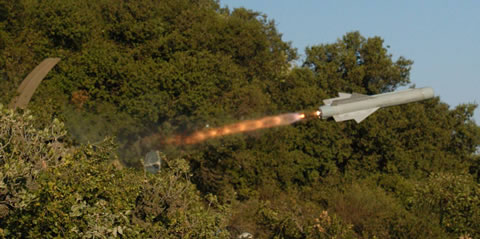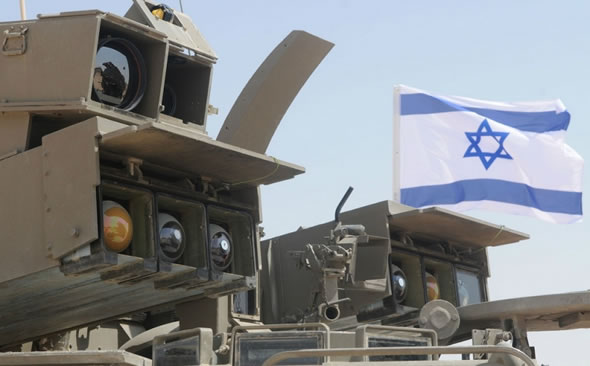The Tamuz precision guided beyond line of sight (BLOS) guided weapon was developed by RAFAEL Advanced Defense Systems since the late 1970s and has been fielded by the Israeli artillery corps since the early 1980s. The weapon is operated from specially modified M-113 armored personnel carriers known as ‘Hafiz’. The system evolved into a larger family of EO weapons called Spike. In 2009 RAFAEL introduced the Spike NLOS, (Non Line of Sight) considered to be an advanced export version of the Tamuz.
The Tamuz has been used in 2012 – 2013 by the IDF in response to sporadic Syrian firing at Israeli patrols and military posts along the border of the Golan heights. By using this weapon’s long range and rapid response capability, high precision and minimal risk of collateral damage the IDF could relay a warning to the Syrians without risking unwanted and excessive effect that could be caused by heavier guided weapons or statistical weapons (artillery, mortars).

Tamuz was designed as an anti-tank weapon, equipped with a powerful shaped-charge warhead. Similar to other EO guided weapons in Israeli inventory, Tamuz can be autonomously guided with ‘man in the loop’ control, enabling maximum control and flexibility through the engagement. The missile operates in both day and night time and under limited visibility conditions. The advantages of the EO targeting and guidance system is the ability of the weapon to acquire the target in flight, based on partial targeting information. The operator can acquire the desired target as it becomes visible via the missile’s seeker, as the missile approaches the target area.
Its range exceeds 20 km and the speed is over 220 m/sec, significantly reducing the acoustic signature of an approaching missile. Although the weapon was designed as an anti-tank weapon it was successfully employed in combat against enemy irregular dismounted targets in open terrain and built-up areas. Over 600 of the missiles were fired in combat during the Second Lebanon War. Officially, the weapon’s high cost military prevents users from spending such high priced weapons on secondary important targets, however, the IDF apparently approved expending the weapons anticipating the approaching expiration (the first Tamuz systems were fielded in the early 1980s).



















